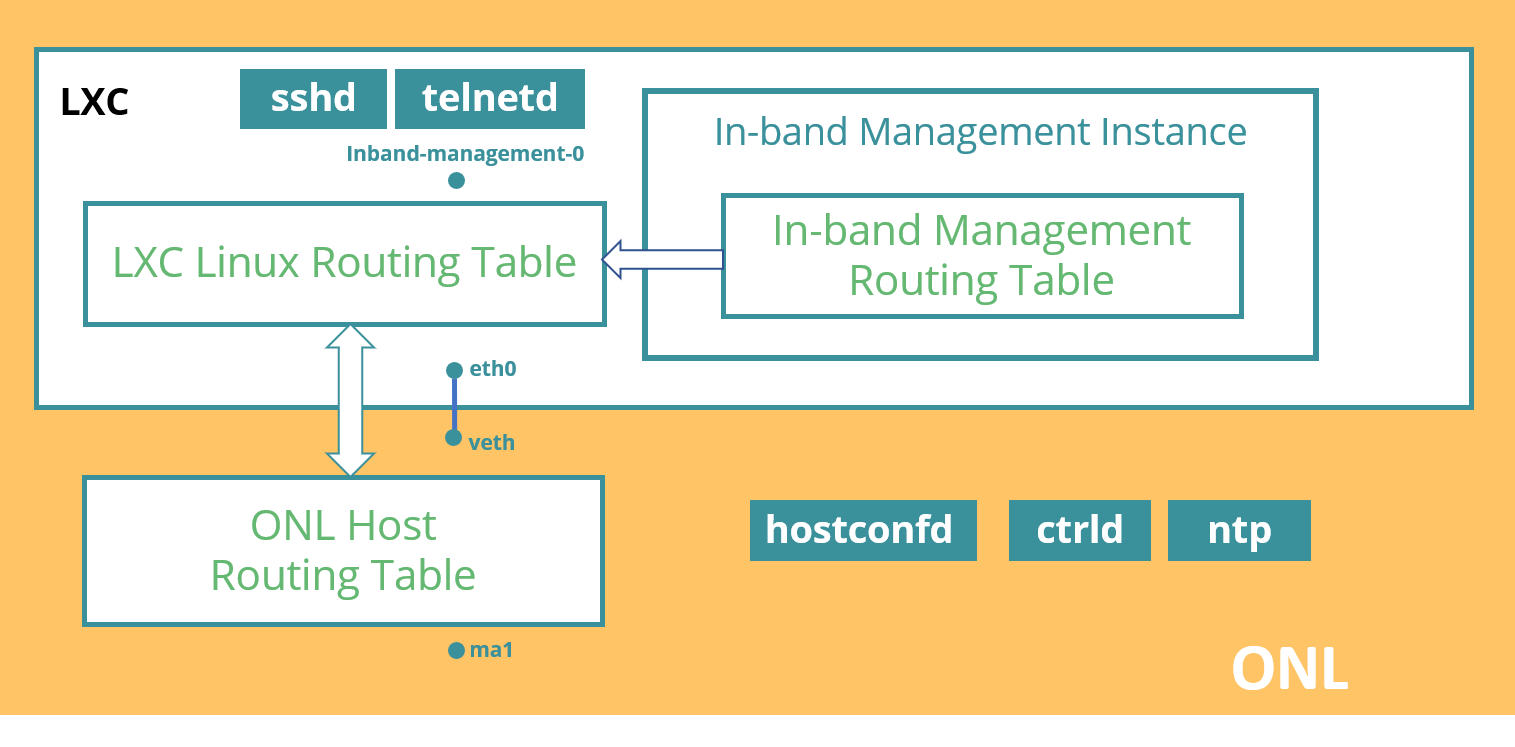In-band Management Overview
RBFS is mostly deployed on the RtBrick Host Operating System as a Linux container. The RtBrick Host is only reachable through the out-of-band management interface. In order to use services like NTP, and TACACS, which are run on RtBrick Host, or to use services like ssh, snmpd running in LXC container, one must use an out-of-band management connection. In-band management provides a way to access these services which are running in RtBrick Host and LXC containers via physical traffic ports.
The RBFS creates a Linux kernel interface named inband-mgmt-0 when in-band management is enabled on an instance. The loopback IPs of the in-band instance are then assigned to this Linux interface, and the routes of this instance are downloaded to the LXC container, then to RtBrick Host. Trap rules are installed in the hardware depending on the in-band service enabled.
